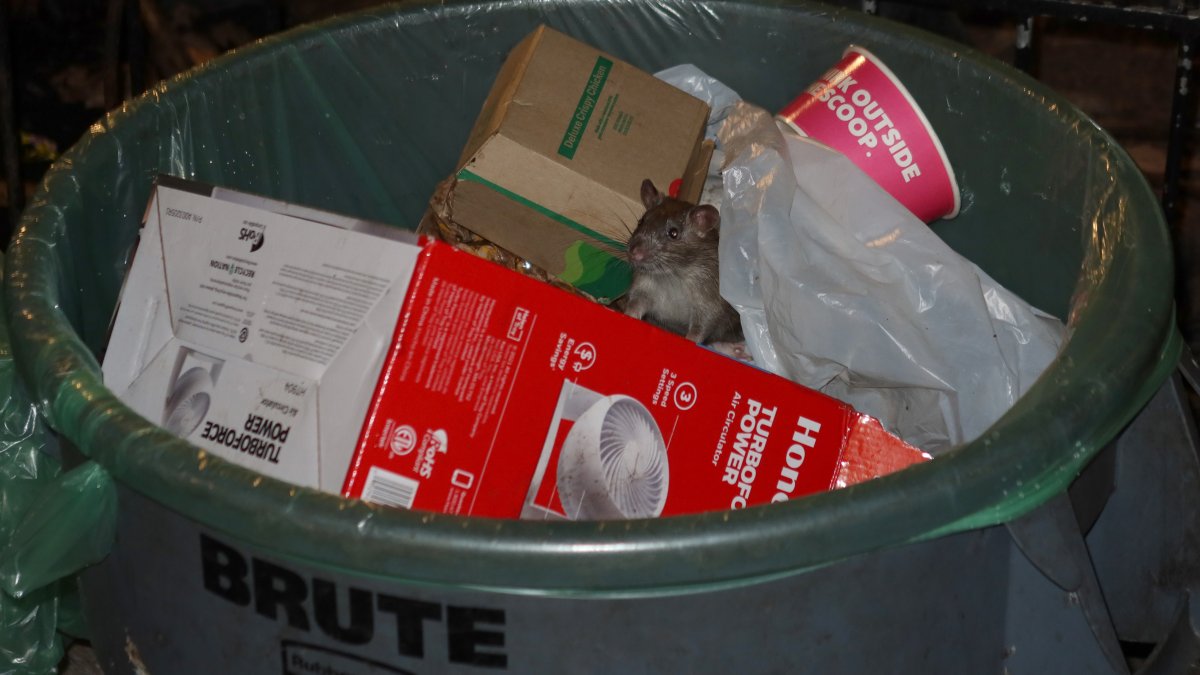NEW YORK — Already public enemy No. 1, New York City’s roaming rodent population poses a new threat as researchers reveal millions of rats may carry the virus that causes COVID-19.
New research on Thursday raises the question of possible animal-to-human transmission in one of the Big Apple’s largest population groups: rats. Previous research has already shown that the virus can live in pets, big cats in zoos and wild deer.
The rat capture team that published research in the American Academy of Microbiology’s mBio journal found that wild rodents are susceptible to the virus and, through further laboratory studies, determined that they can contract several of its variants.
“To our knowledge, this is one of the first studies to show that SARS-CoV-2 variants can cause infections in wild rat populations in a large urban area of the United States,” said Dr. Henry Wan of the University of Missouri said.
The team behind the research captured 79 rats in the fall of 2021, mostly in Brooklyn parks. Samples from the rodent groups were tested and 13 (16.5%) tested positive, according to the study. Expanding the animal positivity rate to the study’s estimated city-wide rat population (8 million), it can be assumed that up to 1.3 million rats could display an immune response to COVID. -19.
Hardy rodents that they are, rats that received the virus in the lab did not show extreme reactions to SARS-CoV-2. Despite the high levels of viral RNA in the animals’ noses and lungs, none experienced significant weight loss or other reactions.
Of the three variants, Alpha, Delta and Omicron, rats appeared susceptible to all three, the researchers found through the additional “viral challenge study”. However, Delta replicates “more efficiently” than the other two in rats.
A review of the data by the Los Angeles Times takes the implications one step further, saying the findings suggest that rats could not only be a source of reinfection for humans, but could also become a source of new variants that could pose problems to humans. along the way, potentially.
“Several studies have suggested that fragments of SARS-CoV-2 genomes have been identified in sanitation systems and that the prevalence of SARS-CoV-2 in sanitation systems coincides with outbreaks in resident human populations. “, explained the study.
“However, no evidence has shown that SARS-CoV-2 viruses in sewage are infectious, suggesting that sewer rats may have been exposed to the virus through airborne transmission, such as by straddling spaces. life with humans or indirect transmission from unknown fomites, for example, residues of contaminated human food”.
Its researchers warn that many more studies are needed to understand the full implications of any possible threat to people. Their ever-growing population, which has exploded in recent years and caught the attention of the city’s mayor, makes rodents an obvious threat if a transmission link between rats and humans can be established.
“Rats likely play an important role in the evolution of Alpha, Delta, and Omicron variants, which has the potential to lead to the emergence of new rat variants that are naive to the human population and may contain properties harmful to humans.” “, said the research team.
The threat of future mutations or viral strains among rat populations requires additional monitoring, Dr Wan said, for the protection of “human and animal health”.
For its part, the New York City Department of Health noted the following:
“Although the Ministry of Health was not involved in this research study, we know that other animals have been infected with SARS CoV-2. This study suggests that Norway rats and laboratory rats may also be susceptible to infection with SARS-CoV-2, but at this time there is no evidence to suggest that infected rats transmit the virus or pose a COVID-19 threat to New Yorkers.” , the health ministry said in a statement.

